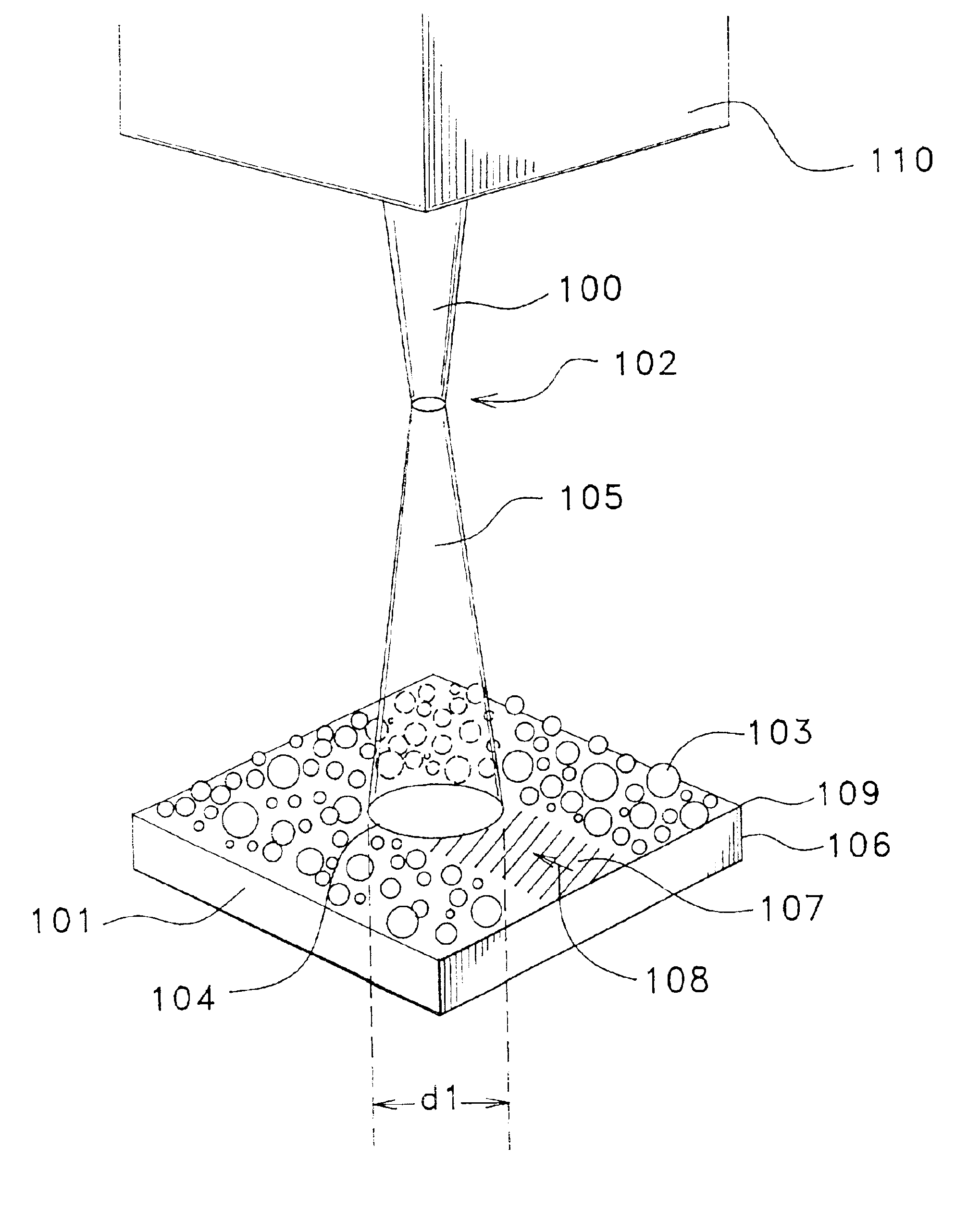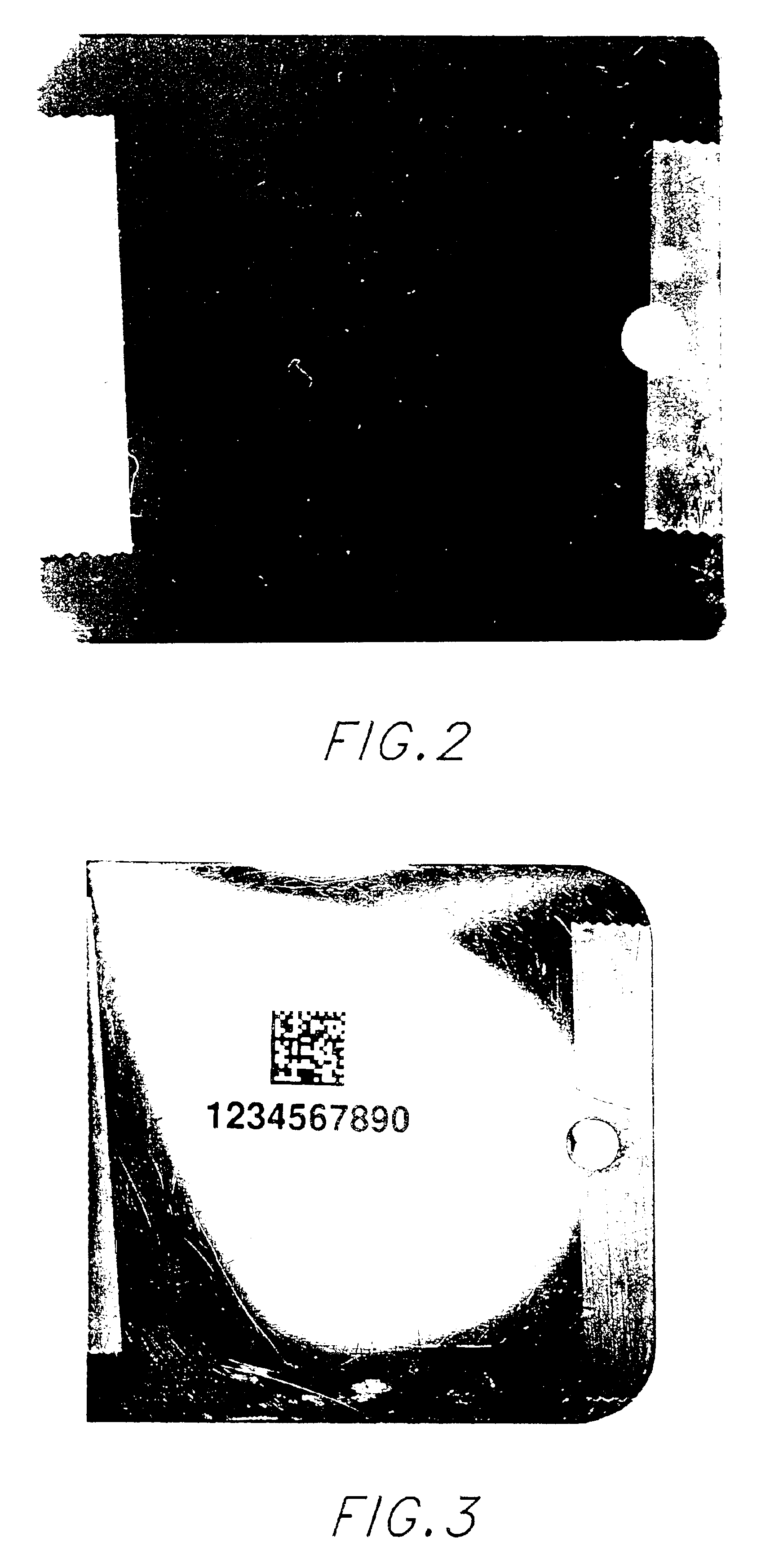High contrast surface marking using mixed organic pigments
a technology of organic pigments and high contrast, applied in the field of high contrast surface marking using organic pigments, can solve the problems of inability to mark transparent enameled objects, material damage, and inability to meet the requirements of the product,
- Summary
- Abstract
- Description
- Claims
- Application Information
AI Technical Summary
Benefits of technology
Problems solved by technology
Method used
Image
Examples
Embodiment Construction
AND FIGURES
In all the below listed figures, the resulting marks were produced on commercially available Nd:YAG laser markers as manufactured, for example, by Lumonics Corporation, A B Lasers, Inc., Controlaser, Inc., and / or Rofin Sinar, Inc. with power capability and optical configurations capable of providing the referenced marker parameters. In all examples the laser marker utilized produced a spot size of 100 to 125 microns, and the surface of the workpiece was placed 2 mm to 3 mm below the focal plane of the laser beam. In FIG. 2 through FIG. 8 the marking material was manually applied using a soft brush with resulting thicknesses varying between 75 and 125 microns on the workpiece surface.
FIG. 1 is a photograph of a transfer label using Cerdec 24-2702 glass frit containing energy absorbing enhancers as the marking material having a thickness of approximately 250 microns and a soda-lime glass microscope slide workpiece after the inventive process. The left mark was produced usin...
PUM
| Property | Measurement | Unit |
|---|---|---|
| thickness | aaaaa | aaaaa |
| thickness | aaaaa | aaaaa |
| wavelength | aaaaa | aaaaa |
Abstract
Description
Claims
Application Information
 Login to View More
Login to View More - R&D
- Intellectual Property
- Life Sciences
- Materials
- Tech Scout
- Unparalleled Data Quality
- Higher Quality Content
- 60% Fewer Hallucinations
Browse by: Latest US Patents, China's latest patents, Technical Efficacy Thesaurus, Application Domain, Technology Topic, Popular Technical Reports.
© 2025 PatSnap. All rights reserved.Legal|Privacy policy|Modern Slavery Act Transparency Statement|Sitemap|About US| Contact US: help@patsnap.com



